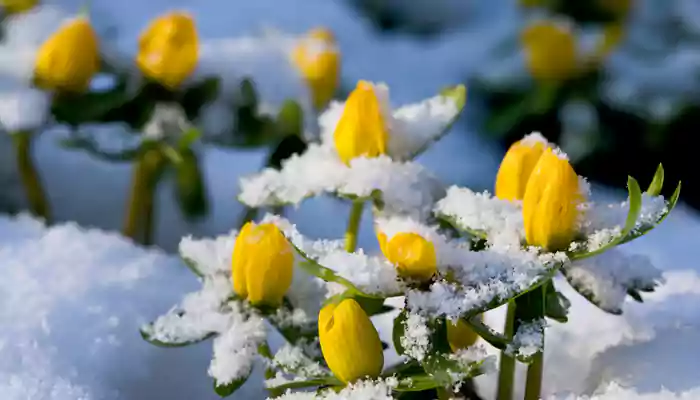Top 10 Winter Bedding Plants: Brightening Up The Chilly Season
Winter often conjures images of barren landscapes, skeletal trees, and a world blanketed in white.
- Ishani Karmakar
- 13 October, 2023
- 2 mins ago

Top 10 Winter Bedding Plants: Brightening Up The Chilly Season
Winter often conjures images of barren landscapes, skeletal trees, and a world blanketed in white.
But for gardening enthusiasts, winter need not be a season of dormancy. With the right selection of bedding plants, you can transform your garden into a riot of colour and fragrance even in the coldest months. Here's a guide to the top 10 winter bedding plants to bring life and vibrancy to your garden.
Pansies (Viola x wittrockiana)
Pansies are versatile and can thrive in both spring and winter. Their faces, often in shades of purple, yellow, and white, can brighten up any garden.
Care: They prefer well drained soil and benefit from a sunny or partially shaded spot. Regular dead-heading will keep them blooming throughout the season.
Violas (Viola cornuta)
Similar to pansies but smaller, violas come in an array of colours and patterns. They're perfect for adding delicate charm to winter beds and containers.
Care: Violas are low maintenance. They do best in well-drained soil and partial shade. Like pansies, they'll bloom longer with regular dead-heading.
Primroses (Primula)
Primroses come in various colours, from vibrant reds to pastel blues. Their rosette of leaves is complemented by a cluster of delicate flowers.
Care: These plants prefer partial shade and moist, well-draining soil. Ensure they're protected from harsh winter winds.
Cyclamen (Cyclamen persicum)
Cyclamen's sweptback petals in shades of pink, red, or white, paired with heart-shaped leaves, make it a winter favourite.
Care: They prefer cool conditions and well-drained soil. Avoid overwatering, and ensure they have protection from severe frosts.
Winter Aconite (Eranthis hyemalis)

Winter aconite bursts into life even through the snow, offering yellow buttercup-like flowers.
Care: This plant loves a spot under deciduous trees. Once established, it can spread and create a winter carpet of gold.
Snowdrops (Galanthus)
Snowdrops are one of the first signs that spring is on its way. Their white, teardrop-shaped flowers dangle gracefully from green stems.
Care: They thrive under deciduous trees or shrubs in moist soil. Snowdrops can naturalize and spread over time.
Heather (Calluna vulgaris)
Winter flowering heather offers a range of colours, from whites and pinks to purples, and brings texture to winter gardens.
Care: Plant in acidic, well-drained soil in a sunny spot. Trim back in spring to maintain its shape.
Hellebores (Helleborus)
Often referred to as the "Christmas rose" or "Lenten rose", hellebores have large, bowl-shaped flowers in whites, greens, pinks, and purples.
Care: Hellebores prefer partial shade and fertile, well-drained soil. Remove old leaves in late winter to make the new blooms stand out.
Sweet Box (Sarcococca confusa)
This evergreen shrub may be unassuming, but come winter, it produces small, fragrant white flowers that can scent the whole garden.
Care: Sweet Box is adaptable but prefers partial to full shade and moist, welldrained soil.
Witch Hazel (Hamamelis)
Witch hazel's spidery flowers in yellows, oranges, and reds can look like fireworks against the winter sky. They also offer a sweet fragrance.
Care: Plant in well-drained soil in a sunny or partially shaded spot. Prune after flowering to maintain its shape.
Why You Should Continue Gardening During Winters
Winter might beckon many to retreat indoors, but gardening shouldn’t be left behind with the warmer months. Tending to a garden during the colder season offers therapeutic benefits, infusing tranquillity into shorter days. It provides an opportunity to prepare for spring, allows for the cultivation of winter crops, and keeps the garden ecosystem active. Moreover, the stark beauty of frosted plants and the joy of spotting winter blooms can be a heart-warming reward, reminding us that life persists even in the chill. So, don your winter coat and keep that green thumb working!





